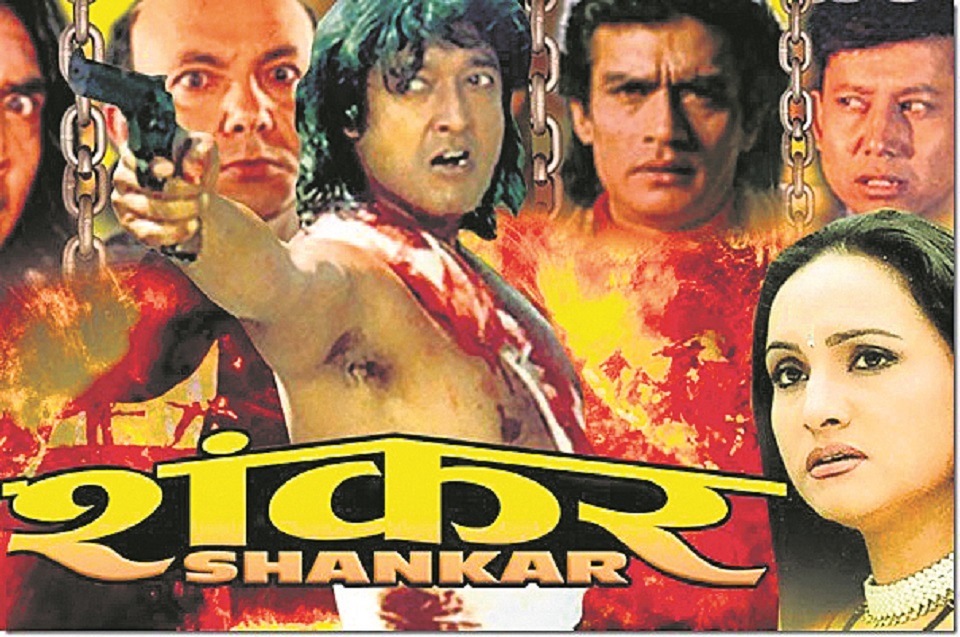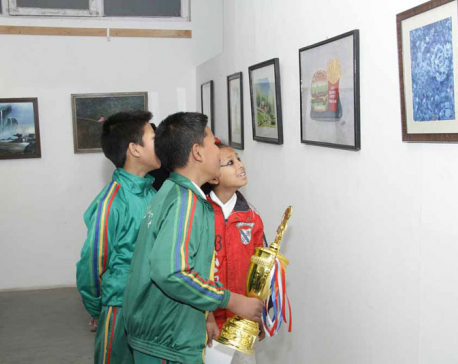
OR

Today’s movies are getting international recognition and awards not just because of their quality but also for globalization and easy access to international platforms
Nepali film industry, popularly known by portmanteau of Kathmandu as Kollywood, is one of the rising movie production hubs. The production of Aama marks the inception of cinematic development inside homeland. From that point to now, the industry has tried to offer varieties of movies to meet the taste of diverse audiences. Following different demand of audience, there has been a changing trend in the representation and subject matter of Nepali cinema over the years. The way movies were made in the late 90s is completely different from the way they are done in recent days, especially after 2008.
However, after the wake of new storyline in Nepal cinema, today’s generation has built a kind of tendency to negatively criticize subject matter of old movies by comparing it with new ones. I have often seen many so-called intellectuals mock legendary Nepali actor Rajesh Hamal and at the same time praising new debut Mukul Bhusal for his role of Chopendra in Bulbul. Given the political scenario and social context of Nepal (feudal, autocracy) then people used to seek someone who could express their inner outrage, that’s where Rajesh Hamal’s character fitted in. The storyline of movies like Shankar (1997) was reality of Nepali society. The angry young man character and loud dialogues were demand of that time. Besides, the audience used to love such stories.
Now in changed context, people are able to release their collective outrage and they no longer need someone to speak on their behalf. That’s why we have different storylines and characterization like Chopendra, who offers dominant space for female counterpart to drive the plot.
Just consider a hypothetical scenario, what if the movies like Loot were made at that time? Would Nepali society accept it easily? Today we are just looking at one side of the coin and saying that earlier Nepali cinemas were of low standard but tend to miss another side: Even the then audience of Nepali cinema would not accept the movies of our times.
The main reason why there has been shift in content and the characterization of leads in last decade is because the targeted audience has changed. During the late 90s the targeted audiences were from villages. So movies were made so that they could relate with the characters. As the society evolved, the plot of Nepali movies began to adapt to new social frames in presentation, resulting in change in storyline and characterization. And today’s movies are getting international recognition and awards not just because of their quality but also for globalization and easy access to international platforms.
Judge well
Before making negative comment about the movies and performance of legendary actors like Rajesh Hamal from today’s standards, we need to understand that he was not just an actor. He was a phenomena or the institution in itself who contributed to the production of many Nepali movies in course of his career. During the 90s there were many production crews who would make movies only if they could hire and feature Rajesh Hamal as angry young man.
Now the paradigm has shifted as small budget and content-driven films are outweighing those with celebrated stars. In recent years, people are interested to watch well-crafted movies with parallel groups of talented actors such as Bipin Karki, Khagendra Lamichhane, Buddhi Tamang, Reshma Gurung, Aruna Karki and Prakash Ghimire. These actors feel like familiar faces around us who add more realistic touch in movies. Gone are the days when lead actor’s stardom used to drive the audience. Nowadays Nepali movie industry is thriving without any mega star like Rajesh Hamal and the work of crew is more preferred in the story. Owing to this context we can claim that Nepali cinema is slowly evolving to better version of modern theatre production.
While talking about movie analysis, presentism—the tendency to interpret past movies in present terms—besets Nepali understanding of movies. For example, during my childhood days I remember enjoying the fight scene of Indian TV series. Today whenever we watch back same episodes in YouTube, animations and screenplay seem boring. That’s because today we are habituated to 3d-4d movies with more advance progress on characterization and direction.
Lately, same phenomena are dominant among Nepali movie audience and critics. On one hand there are viewers who just appreciate the development of Nepali cinema and, on the other, we have equally active group of critics who keep on condemning old Nepali cinemas and actors by comparing them with today’s cinematic presentation and audience reach.
Changing times
The movies and stars celebrated today will also meet same fate in future when Nepali cinema will evolve to the next level. Then the new generation will surely mock the storyline and characterization of today’s movie celebrities. It would be wrong to judge the value of movie in term of audience reach, because given today’s easy access to abundance of theatres, online bookings and entertainment centric lifestyle, it’s obvious that there will be more audience than before. Otherwise, what about those few chunks of the late 90s movies loving teens who used to save money by escaping tiffin and walk miles to city just for watching movies like Shankar? Can we find such passionate audience for any of the Kollywood movies produced in today’s time?
Thus, instead of passing judgment about the artistic ability of earlier actors in social media, today’s generation should try to ignore logical fallacies and have more liberal perspective toward the development of films. They should understand that even the Hollywood and Bollywood industries have passed through same phase before reaching the zenith they are in today.
biranchipoudyal@gmail.com
You May Like This

Alfesco Open Art Exhibition begins at Nepal Art Council
KATHMANDU, Feb 14: Alfresco Media and Event organized ‘Alfresco Open Art Exhibition and Competition 2017’ for pre-primary level to college level... Read More...

‘Insights’ concludes at Nepal Art Council
The watercolor painting exhibition 'Insights' by artist duo D Ram Palpali and NB Gurung, which began last week at Nepal... Read More...

Govt should prioritize Miss Nepal: Miss Nepal Shrinkhala Khatiwada
MAKWANPUR, April 24: Newly crowned Miss Nepal World 2018, Shrinkhala Khatiwada has urged the government to prioritize the pageant as... Read More...







Just In
- NRB to provide collateral-free loans to foreign employment seekers
- NEB to publish Grade 12 results next week
- Body handover begins; Relatives remain dissatisfied with insurance, compensation amount
- NC defers its plan to join Koshi govt
- NRB to review microfinance loan interest rate
- 134 dead in floods and landslides since onset of monsoon this year
- Mahakali Irrigation Project sees only 22 percent physical progress in 18 years
- Singapore now holds world's most powerful passport; Nepal stays at 98th












Leave A Comment